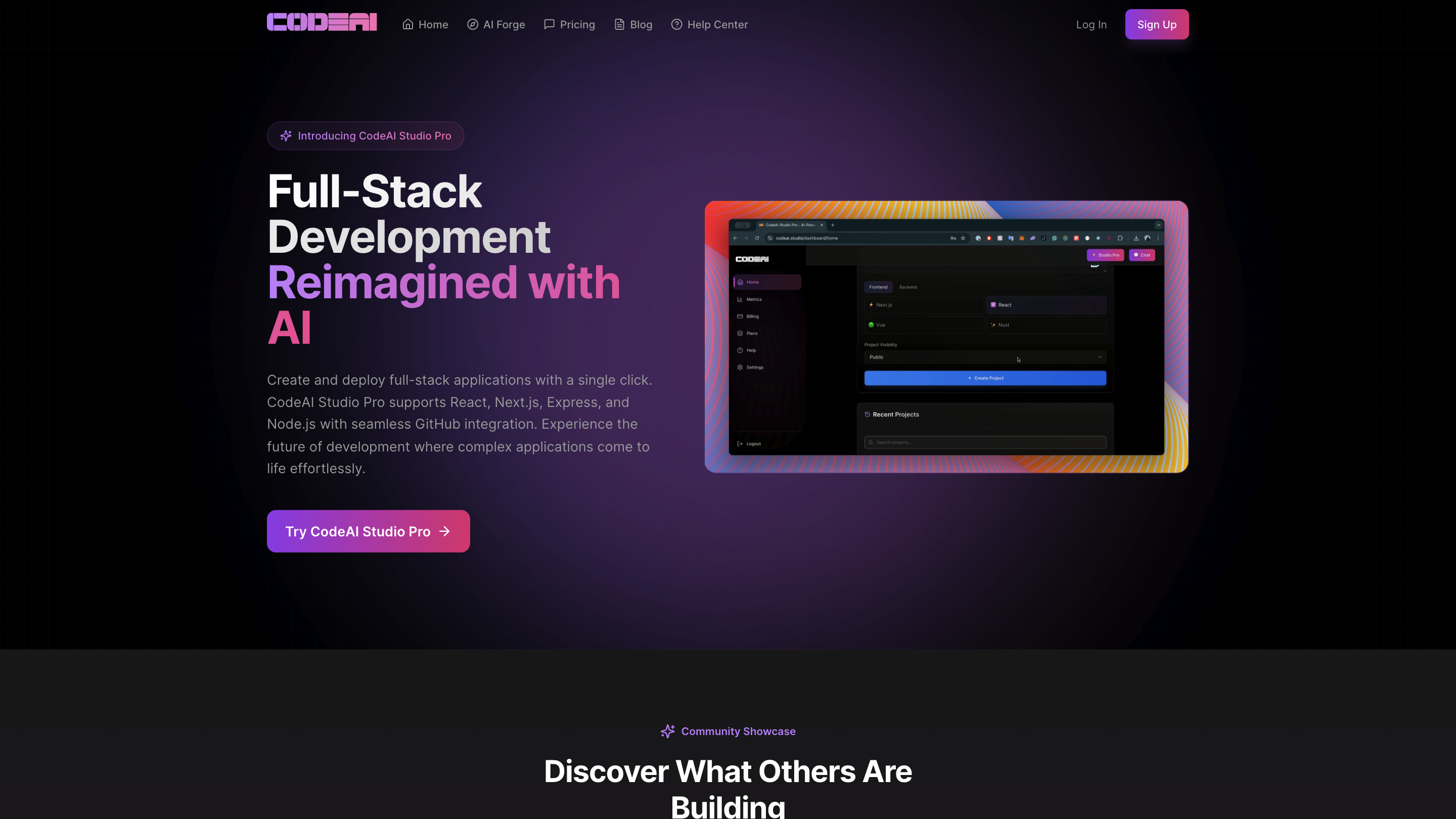CodeAI
Open siteIntroduction
Generate code effortlessly with AI-powered CodeAI.
CodeAI Product Information
AI Tool: Multi‑Domain Code and Text Transformator
This AI tool is a comprehensive code and text generation assistant that can create, transform, explain, and debug code and related content across multiple programming languages and formats. It supports generating functions and classes from natural language descriptions, converting descriptions to SQL/HTML/Regex, translating code between languages, explaining code in plain English, fixing invalid code, and creating tests. It also offers utilities for extracting and formatting information, building small UI or CLI samples, and producing example usage snippets.
How to Use
- Describe what you need in natural language (or provide a short prompt).
- The tool will generate the requested code, function, or description in a relevant language.
- Use or adapt the generated snippet in your project.
Supported Capabilities
- Generate a function from a natural language description in multiple languages (e.g., Python, JavaScript, Java, C++, Kotlin, TypeScript, etc.).
- Create a class from description across many languages.
- Translate code from one programming language to another.
- Convert a natural language description into SQL commands.
- Generate HTML/CSS/JavaScript from a description.
- Explain code in plain English (code-to-explanation).
- Fix invalid or buggy code and provide corrected versions.
- Generate tests or test scaffolds for given code.
- Derive language or syntax information from a code snippet.
- Compute or derive simple algorithms (e.g., factorial, sum, max element) from prompts.
- Produce small demos (CLI/GUI/web) and usage examples.
- Create regex patterns from descriptions and explain regexes in plain English.
- Explain or generate shell/CLI commands or Linux commands from descriptions.
- Provide code and content in multiple languages and with comments in the target language.
- Output runnable code blocks, with minimal surrounding text for clarity.
Typical Use Cases
- "Create a function that adds two numbers in Python or JavaScript from a short description."
- "Translate a given Java snippet into C++ or Kotlin."
- "Write a SQL query from a plain-English requirement (e.g., update all records where a condition holds)."
- "From a description, generate a small HTML page or component."
- "Explain what a piece of code does in simple terms."
- "Provide a unit test scaffold for a given function or module."
- "Produce regex patterns for common validation tasks (email, URL, etc.) along with explanations."
Output Style
- Clear, concise code blocks in the requested language.
- Optional accompanying explanation in plain English.
- If a template or structured output is requested, follow the template precisely.
- Ensure edge cases or input validation are addressed where relevant.
Safety and Best Practices
- Treat generated code as a starting point; review for security, performance, and correctness.
- Do not rely on generated content for sensitive production systems without proper testing.
- Respect licensing and attribution when adapting external code.
Sample Template (from a prompt)
- Prompt: "Write a Python function that sums two numbers and returns the result."
- Output:
def add(a, b):
return a + b
- Prompt: "Convert this JS function to TypeScript with types."
- Output:
function add(a: number, b: number): number {
return a + b;
}
Quick Reference of Common Tasks
- Function/Class from description (various languages)
- Code-to-English explanations
- Code fixes and debugging
- Tests and test scaffolding
- SQL/HTML/Regex generation from description
- Language translation for code
- Simple algorithms and data processing tasks
- UI/CLI/sample code snippets
Note: This tool is designed to be flexible and handle prompts of varying length and detail. For best results, provide specific requirements (language, input/output, edge cases) when possible.
